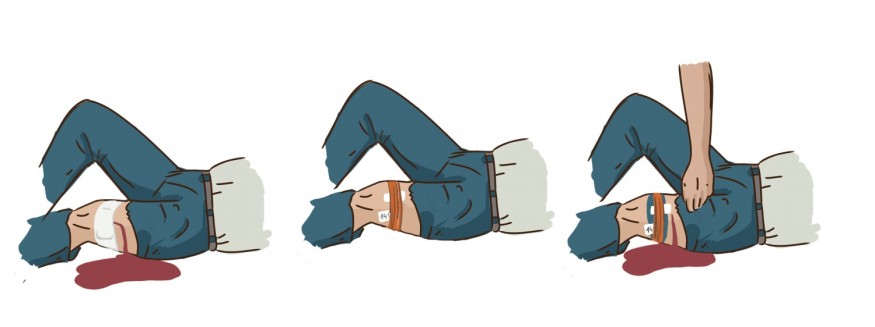How To Stop Bleeding After An Injury

Accidents can happen anytime, resulting in an injury that may bleed. The bleeding after an injury must be attended to immediately so the situation won't worsen.
Injuries can occur in various cases. They can happen due to a vehicular accident, sports participation, or even an ordinary household task. Attending to the bleeding wound can dictate how the injured individual will fare after the unfortunate incident.
If left unchecked, severe bleeding can cause someone to fall unconscious. If the blood loss worsens, the person can go into hypovolemic shock - resulting in tissue and organ damage. It's essential to manage the situation before it escalates. Knowledge of first aid in attending to bleeds can be helpful for anyone.
Stopping Bleeding In Injuries 101
This post will guide you on stopping bleeding after an injury. It's important to note that using sterile equipment like a tourniquet is crucial for significant injuries and wounds. Make sure to stock one in your first aid kit. The ones from the SAM XT are easy to use and lifesaver. This may be helpful for you, especially if you're a mom with active kids, an educator surrounded by inexperienced children, or even a sports team coach.
Here are the steps you must take in order to properly manage and halt bleeding in the case of injuries:
1. Help The Injured Person Stay Calm
The sight of blood can make anyone feel cold and clammy. All the more if the blood is spurting out from one's body. An individual in this situation may instantly feel nauseous. As somebody who can attend to the problem, the first thing you must do is to keep the injured person calm.
You can talk to them in a soothing voice, hold their hand and reassure them that help is on the way. If they panic at the sight of blood, you may distract them by talking about something else or asking them to focus on breathing.
2. Call The EMS
If the wound is deep, especially if it's beyond your capacity as an ordinary person to fix, it's best to call Emergency Medical Services. They're trained to provide quick and professional medical assistance and transport the patient to the nearest hospital for appropriate treatment.

3. Apply Direct Pressure
While waiting for the arrival of the EMS, you may apply direct pressure to the wound to prevent blood loss. Blood gushing out of an open wound is your body's natural reaction to clean the wound and promote healing. Nonetheless, if the bleeding is severe, the blood loss can cause complications and even death.
Use a clean cloth or a sterile bandage when applying pressure. Ensure it's firm enough to compress the blood vessels and reduce blood flow. If possible, elevate the sight of the wound to the level above the patient's heart.
The injured individual may complain of pain due to the pressure, but it's necessary. Just continue to distract them as you do this.
4. Clean The Wound
To prevent complications, it's essential to clean the wound. This is crucial to avoid infections that may lead to sepsis.
To clean the wound, follow these steps:
Wash and dry your hands completely.
Remove any dirt or debris on the wound using sterile tweezers; if there are any.
Wash the wound with clean water or a saline solution. You may use a mild soap if it's available.
Pat dry the wound using a clean cloth or sterile gauze. Do not rub to prevent further damage.
Apply a thin coating of antibiotic ointment using a cotton swab to avoid infection.
Cover the wound with a sterile bandage or gauze to protect it from further injury and keep it clean.
By following these steps, you can ensure the wound will not get infected and will heal quickly.
5. Seek Medical Attention
For large wounds, it's essential to consult with a medical professional. They may be able to implement additional measures to ensure the patient's life will be better after the injury. Even if you successfully stop the bleeding, the injured individual may need stitches to close the wound. They might need to be administered with a tetanus injection, especially if the injury came from a rusty object.
The doctor may also prescribe antibiotics to manage infections or pain medications if the individual's pain is unmanageable. The doctor may prescribe further treatments or recommend physiotherapy if the injury damages some tendons and nerves.
Conclusion
Knowing a crucial first aid skill like stopping bleeding can be helpful for anyone. The steps outlined in this post will guide you on what to do if you encounter such. But to be effective on this task, you need the right tools and materials, so you better check your first aid kit to see if it has all the things you need to attend to an emergency like a bleeding wound.
Remember, while minor injuries can be taken care of at home, any severe injury will significant blood loss needs immediate medical attention. So aside from stocking up your first aid kits, be informed of the correct number to call for emergencies. Be prepared, and stay safe!
Subscribe to Latin Post!
Sign up for our free newsletter for the Latest coverage!

















